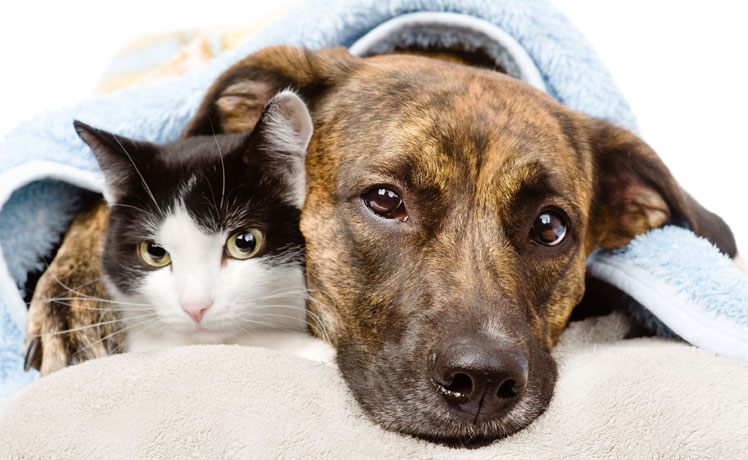
Cancer is a Leading Killer of Pets
May is Pet Cancer Awareness month and it’s a subject we want to tell you more about, because cancer is the leading disease-related killer of dogs and cats.
Here Are Some Facts:
- Cancer kills 50% of all pet dogs over the age of 10 and 33% of those under 10.
- Cancer kills 33% of all pet cats.
- Cancer is almost twice as common in dogs as cats.
- Dogs get cancer at the same rate as humans.
- While cancer isn’t as common in cats, feline cancers tend to be more aggressive. Unfortunately, those cancers aren’t always detected early because cats tend to hide disease well.
- Lymphoma is one of the leading causes of death in cats.
- Breast cancer is the most common cancer in female dogs and the third most common in female cats.
- Older dogs and certain breeds of dogs are more prone to cancers including Boston Terriers, Boxers, Golden Retrievers, Great Danes and Saint Bernards.
- Older cats and cats with white heads are at greater risk of cancer.
Possible Symptoms of Cancer in Your Pet:
 If your pet has any of the following symptoms, we encourage you to have them examined. While these are indicators of various illnesses or conditions–some less severe than others–a physical exam, blood test, radiograph, ultrasound or more will help us diagnose your pet and determine the best course of treatment. Remember, early detection can save your pet’s life!
If your pet has any of the following symptoms, we encourage you to have them examined. While these are indicators of various illnesses or conditions–some less severe than others–a physical exam, blood test, radiograph, ultrasound or more will help us diagnose your pet and determine the best course of treatment. Remember, early detection can save your pet’s life!
- Lump or bump under the skin, especially if it appears to be growing
- Persistent sores or skin infections
- Bloated or distended stomach
- Rapid, unexplained weight loss
- Lack of appetite
- Chronic coughing or difficulty breathing
- Lethargy or depression
- Sudden lameness
- Evidence of pain
- Blood in the stool or urine
- Black tarry stools
- Difficulty urinating or defecating
How You Can Protect Your Pet from Cancer
While there is no known single cause of cancer, there are a few things vets recommend to help prevent your pet from contracting some types of the disease. For example:
- Breast cancer is the most common cancer in female dogs and the third leading cancer in female cats. This cancer can be avoided almost entirely by having your pet spayed before her first heat cycle.
- Properly neutered male pets cannot contract testicular cancer.
- Feed your pet wholesome, healthy foods and monitor their weight. Also ensure your pet has plenty of fresh, clean water daily. Just as with humans, good nutrition is key to disease prevention.
- Keep your pet away from toxins both indoors and out. These can include everything from lawn fertilizers and herbicides to household cleaners and toxic indoor houseplants. Plus, keep your pet on a short leash when walking. While your yard may be safe, your neighbor’s may not be.
- Secondhand smoke can give your pet cancer. Your dog can get lung and nasal cancer and cats can get malignant lymphoma. Cats are especially susceptible to secondhand smoke and living with a smoker can double or even quadruple their risk.
- Protect your pet from too much sun. Believe it or not, just because cats and dogs have fur doesn’t mean they can’t get skin cancer. Their ears, noses, footpads and bellies are particularly at risk. So ensure your pet has adequate shade if they spend much time outdoors including a roofed dog house or play area.
- Most importantly, make sure your pet has regular wellness exams: annual exams for healthy pets, more often for elderly, sick or young pets. Early detection is as important for your pet as it is for you.
